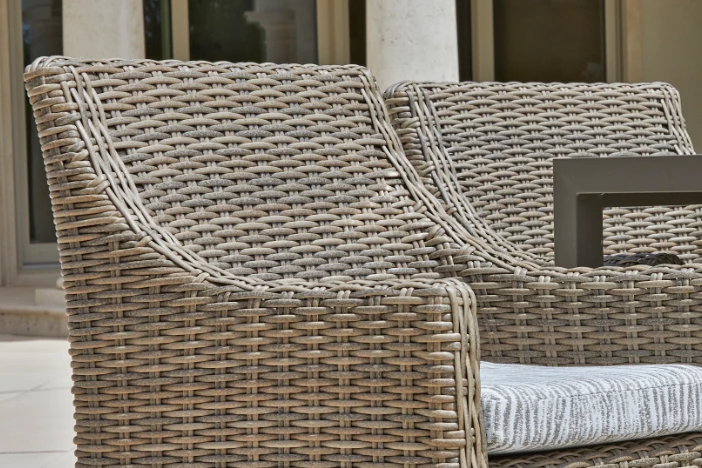
Taking care of synthetic deck furniture
Plastic is lightweight, fade-resistant and can take on many different shapes, textures and styles. It also does not require paint or sealants used by other materials. That makes this synthetic polymer easy to maintain and a great inexpensive option for backyard furniture. However, caring for and learning how to clean outdoor plastic furniture depends on the form it takes.
Sticky spills and drips like tree sap may require commercial products (e.g. Goo Gone), but rubbing alcohol will suffice in many cases. No matter which solution you pick, it’s important to rinse these agents away right after you clean the problem areas. Extended exposure to the chemicals in some products can degrade and fade plastic. This can shorten the look and life of your patio furniture. This part of our maintenance guide talks about two of the most common types of synthetic garden furniture and how to clean them. It’s also import to keep all exposed furniture dry to prevent mold and mildew.
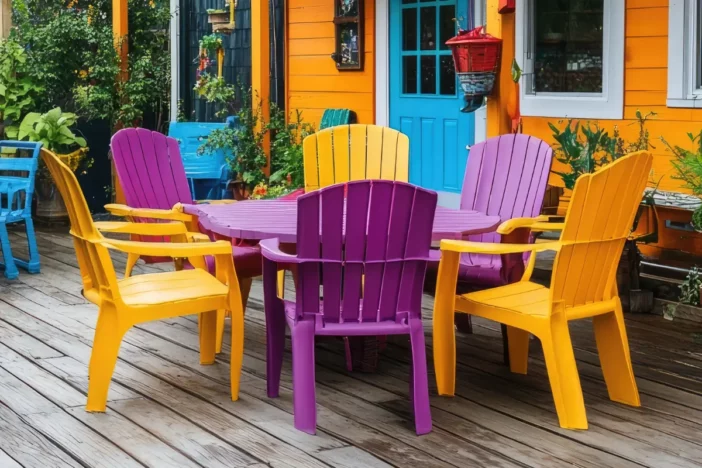
Quick tips for all plastic patio tables & chairs
- Avoid harsh cleaners – Bleach and ammonia can degrade many plastic surfaces.
- Protect from UV – Use covers or shaded areas to extend life, especially for polypropylene and PVC.
- Prevent mold/mildew – Ensure furniture dries completely after washing or rainfall.
- Winter storage – Cold temperatures can make some plastics brittle—store or cover during off-season.
Different types of plastic, different care
Not all “plastic” outdoor furniture is created equal. Behind this broad term are several specific materials—each with distinct benefits, durability levels, and care requirements. When you pick new patio furniture or care for your current set, knowing the type of plastic helps. This knowledge can make your furniture last longer and look better.
Here’s a detailed comparison of the most common plastic materials used in outdoor furniture:
Comparison Table: Common Plastics in Outdoor Furniture
| Material | Pros | Cons | Cleaning & Care |
|---|---|---|---|
| Synthetic Resin Wicker | – Woven for a natural look – Usually weather- and fade-resistant | – Dirt can build up in weaves – Can be damaged by high-pressure washing | – Clean with a soft brush or vacuum in crevices – Rinse gently with a garden hose |
| Polypropylene (PP) | – Very lightweight and budget-friendly – Molded into sleek shapes | – Less UV-resistant; can fade or chalk over time – More brittle in extreme cold | – Wash with mild soap and water – Store or cover to protect from prolonged sun exposure |
| High-Density Polyethylene (HDPE) | – Highly durable and UV-resistant – Won’t chip, crack, or peel easily – Often made from recycled materials | – Heavier than other plastics – May cost more upfront | – Easy to clean with soap and hose – Can withstand most weather without additional protection |
| PVC (Polyvinyl Chloride) | – Rigid and low-cost – Resists moisture and rot | – Becomes brittle and cracks with age or temperature extremes | – Wipe down regularly – Avoid heavy impacts and store indoors during freezing temps |
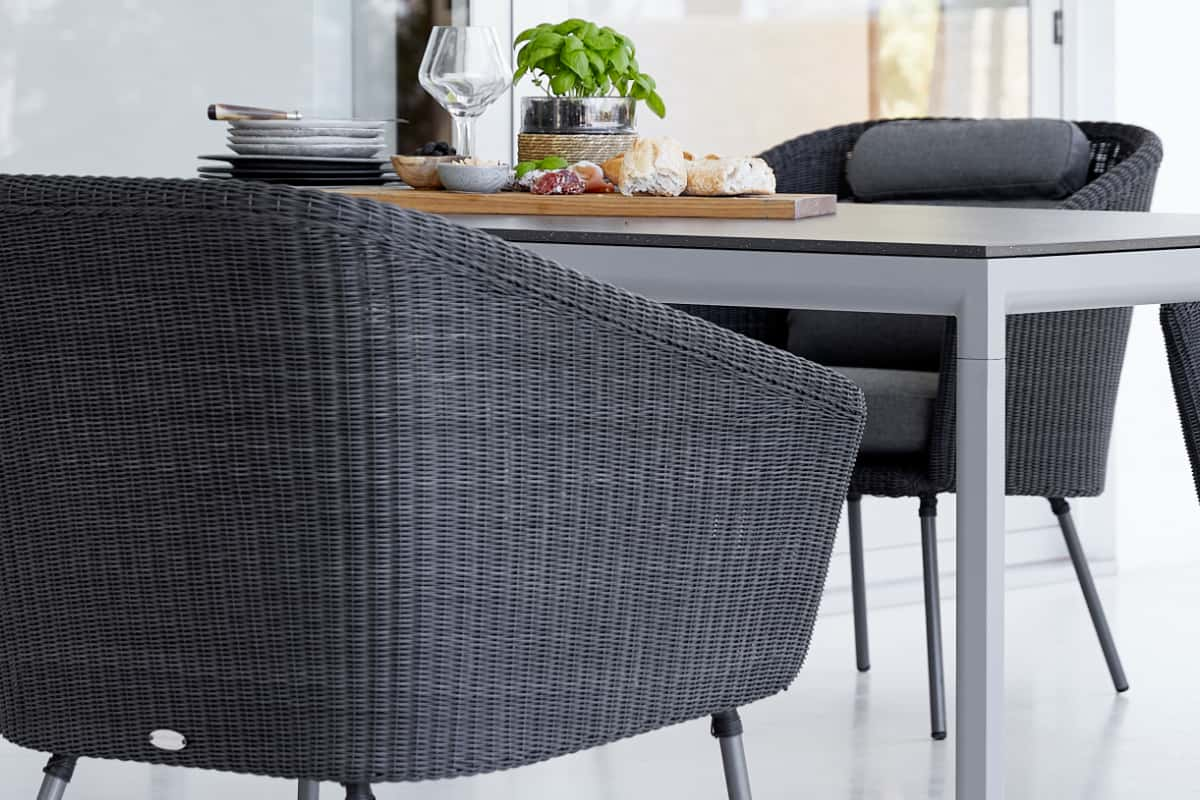
All-Weather Wicker – Cleaning woven resin furniture
In the past, natural rattan or painted white wicker furniture was mainly used for indoor or porch seating. Basically, places where there was some protection from the weather. That was needed because organic materials were used to make the weave. Contemporary resin wicker from brands like Lloyd Flanders offers the look of natural weave. However, it’s resistant to rain, sleet, or snow [Raycheva & Angelova 2017]. Cleaning the nooks and crannies in intricate resin wicker patio furniture takes a little effort.
Pre-season preparation & maintenance checklist for all-weather wicker patio furnishings
All-weather wicker is usually made from synthetic materials like resin or polyethylene. It has the classic look of natural rattan but is more durable against the weather. Still, proper pre-season maintenance is essential to keep it looking fresh and performing well. Here’s a detailed checklist to prepare your wicker furniture for outdoor use and maintain it throughout the season.
Preparation – Resin wicker
- Uncover and Inspect
Remove any covers and inspect furniture for mold, fading, brittleness, or cracked strands. - Vacuum Loose Debris
Use a vacuum with a brush attachment or soft handheld brush to remove dust, leaves, and dirt lodged between woven strands. - Deep Clean the Surface
Mix mild dish soap with warm water and gently scrub with a soft cloth or sponge. Use a soft-bristle toothbrush for crevices. - Rinse Thoroughly
Use a hose with moderate pressure to rinse off soap residue. Avoid pressure washers as they can damage the weave. - Dry Completely
Let furniture air-dry in the sun or use a towel. Do not cover while damp to prevent mold or mildew. - Check Feet and Hardware
Tighten any screws, check for rust on metal fasteners, and replace damaged plastic feet or glides. - Apply UV Protectant (Optional)
For added longevity, apply a plastic-safe UV spray protectant to prevent fading or brittleness.
Routine maintenance – All-weather wicker
- Monthly Cleaning
Wipe down with a damp cloth or soft brush to remove dust and grime. - After Storms or High Pollen
Rinse or wipe down surfaces to prevent buildup in the weave. - Seasonal Deep Clean
Repeat the deep cleaning process mid-season if the furniture is exposed to heavy use or frequent storms.
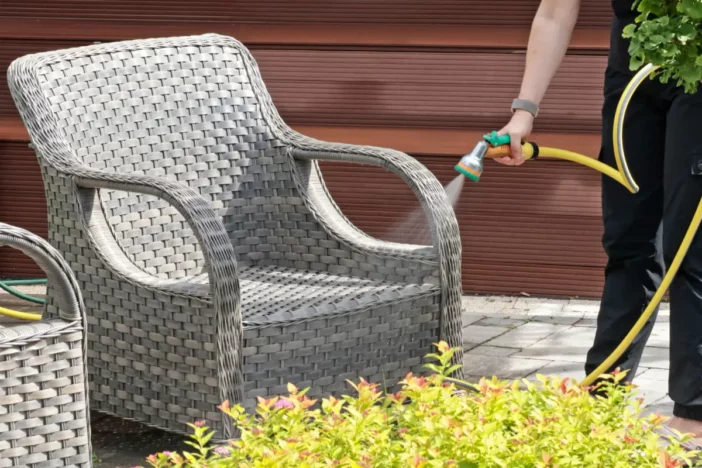
How to clean outdoor wicker furniture
- Remove all pillows and cushions
- Use a soft-bristled brush to get rid of superficial debris
- You can usually remove any extra leaves, twigs, soil, or other materials stuck in the weave. Just use a vacuum with a small brush attachment
- If you have small debris stuck in deep or complex weaves, use a high-pressure washer. Set it to a low or moderate level
- Once the wicker is free of dirt, use a hand brush with mild dish soap and warm water. Gently scrub the surface to remove stains or coatings from pollen, berries, bird droppings, and grime
- Rinse the woven material well to ensure that no soapy residue remains
- Air dry the furniture in the shade if possible
Removing mold & mildew stains from resin garden furniture
Plastic outdoor chairs and tables are inexpensive. Because of this, people often ignore them when it rains or the weather gets bad. However, allowing standing water to accumulate and remain on furniture can lead to the formation of mold and mildew. Fortunately, killing these fungal growths is relatively easy.
- Fill a plastic spray bottle with a quart of water and add a quarter cup of white vinegar
- Liberally spray the stained area
- Allow the solution to set for 20-30 minutes
- Rinse the furniture off with water
- Dry with a towel or air-dry
BUY RESIN WICKER OUTDOOR FURNITURE

Molded Resin – Simple steps for keeping plastics clean
Pool furniture made from plastic or molded resin is relatively low-maintenance and lightweight but tends to get dirty. Plastic tables and chairs get dirty from regular outdoor use. They also break down in direct sunlight and can develop a chalky finish. Consequently, you have to do a few extra steps to clean plastic furniture and make it look new.
Annual maintenance checklist for molded plastic lawn furniture
Molded plastic furniture is a popular option for outdoor areas. It is affordable, versatile, and resistant to rust and rot. Even the strongest plastics can fade, chalk, or get dirty when they are outside for many years. To keep plastic chairs, tables, and loungers looking good and working well, you should check them every year. The following checklist provides simple, effective steps for cleaning, inspecting and protecting your molded plastic furniture before the outdoor season begins.
Preparation – Molded resin
- Inspect for Cracks or Warping
Check for signs of sun damage or structural weakness, especially around legs and joints. - Clean Off Surface Grime
Mix warm water and mild soap. Scrub all surfaces using a non-abrasive sponge or soft brush. - Remove Tough Stains
For mildew, sap, or deep stains, apply a solution of vinegar and water or a baking soda paste. Avoid bleach, which can discolor the plastic. - Rinse Thoroughly
Use a garden hose to rinse off all cleaning agents. Allow it to dry completely before use or storage. - Brighten and Protect
Apply a plastic restorer or protectant designed for UV resistance to enhance appearance and prevent fading or chalking. - Stabilize Wobbly Legs
Check screws (if applicable) and level feet. Replace damaged caps or glides.
Routine maintenance – Plastic
- Monthly Cleaning
Wipe down with a damp microfiber cloth to remove dust, sap, or bird droppings. - Post-Storm Cleanup
Rinse off debris or dirt that may have splashed onto surfaces during rain. - Seasonal Deep Clean & Reapplication
Every season, repeat the deep clean and reapply UV protectant for continued protection.
Preventing chalky build-up on plastic outdoor pieces
- Brush the surface free from debris
- Create a simple mixture of water and mild dishwashing soap
- Dip a sponge, soft-bristled brush or cloth into the soapy water and wipe down the furniture
- Sprinkle baking soda on a damp sponge and rub down the plastic to clean the chalky finish
- Rinse out the sponge and repeat the process until you’ve covered the entire piece
- Rinse the furniture off with clean water
- Dry it with a towel or in the sun
- Restore the plastic’s shine by applying automotive paste wax with a rag
- Let it air dry for roughly 5 minutes
- Buff it with a soft cloth
Resist the temptation to use steel wool or scouring powder to remove spills or stains, as these abrasives will scratch the plastic’s surface.

Cleaning white plastic outdoor furniture
All backyard furnishings get dirty, but white plastic patio chairs seem to try extra hard. Even after you apply a little elbow grease and thoroughly clean, white resin furniture can still have a dingy look. To put the bright back in your white there’s a little extra work.
- Perform a standard cleaning and dry the surface
- Throw on a pair of rubber gloves
- Mix a couple of tablespoons of powdered oxygen bleach with a gallon of water (one cup of bleach for tougher stains)
- Dab a clean brush or sponge with the bleach mixture and scrub the surface until the grime disappears or won’t fade anymore
- Let everything set for 5-10 minutes
- Rinse the plastic with clean water
- Dry it with a towel
- Apply car wax with a rag
- Let it air dry for roughly 5 minutes
- Buff the surface with a microfiber soft cloth in small circular motions to renew the shine
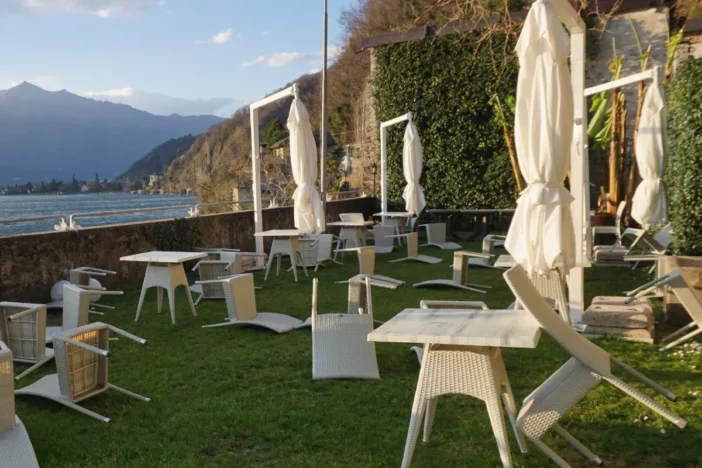
Wind management & stability tips for lightweight plastic furniture
Plastic and resin outdoor furniture is popular because it is affordable and weather-resistant. However, its lightweight design can make it tip over or blow away in strong winds. Use these smart strategies to improve stability and protect your furniture:
Secure Against Wind
- Tie-Down Straps or Bungee Cords – Use discreet but sturdy fasteners to anchor chairs and tables to deck railings or fence posts.
- Weighted Sandbags or Furniture Weights – Put sandbags or special furniture weights near or on base structures. This is important for armless chairs.
- Velcro or Hook-and-Loop Straps – These can hold stackable pieces together. They can also attach to fixed structures like fences or deck posts without making permanent changes.
Prevent Skidding and Shifting
- Non-Slip Rubber Pads or Grips – Place rubber or silicone pads under the legs of chairs, benches, and tables. This helps stop sliding on smooth surfaces like composite decking or tile patios.
- Rubber Furniture Cups – These cups are perfect for windy balconies or apartments. They keep furniture legs stable and protect the floor.
These easy upgrades can keep your lightweight plastic outside furniture stable. They can also reduce noise and movement. This will improve safety and comfort in windy areas.
Helpful Article
Read the resin and plastic section of our Outdoor Furniture Materials Guide. This will help you understand the benefits and drawbacks of these materials.
Tabletops differ from furniture frames and bodies
Taking care of the frames and body structure of outdoor seating can be challenging. Designs feature curves and angles with intricate textures that can trap dirt and debris. Tabletops are available in additional materials with different cleaning techniques. The next section of our guide reviews a few high-end options and how to keep them in tip-top shape.
Guide Sections
References
- Raycheva, R., & Angelova, D. (2017). Woven furniture design: in search of form and texture. Pro Ligno, 13(4).

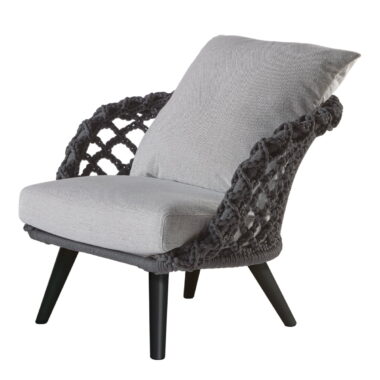
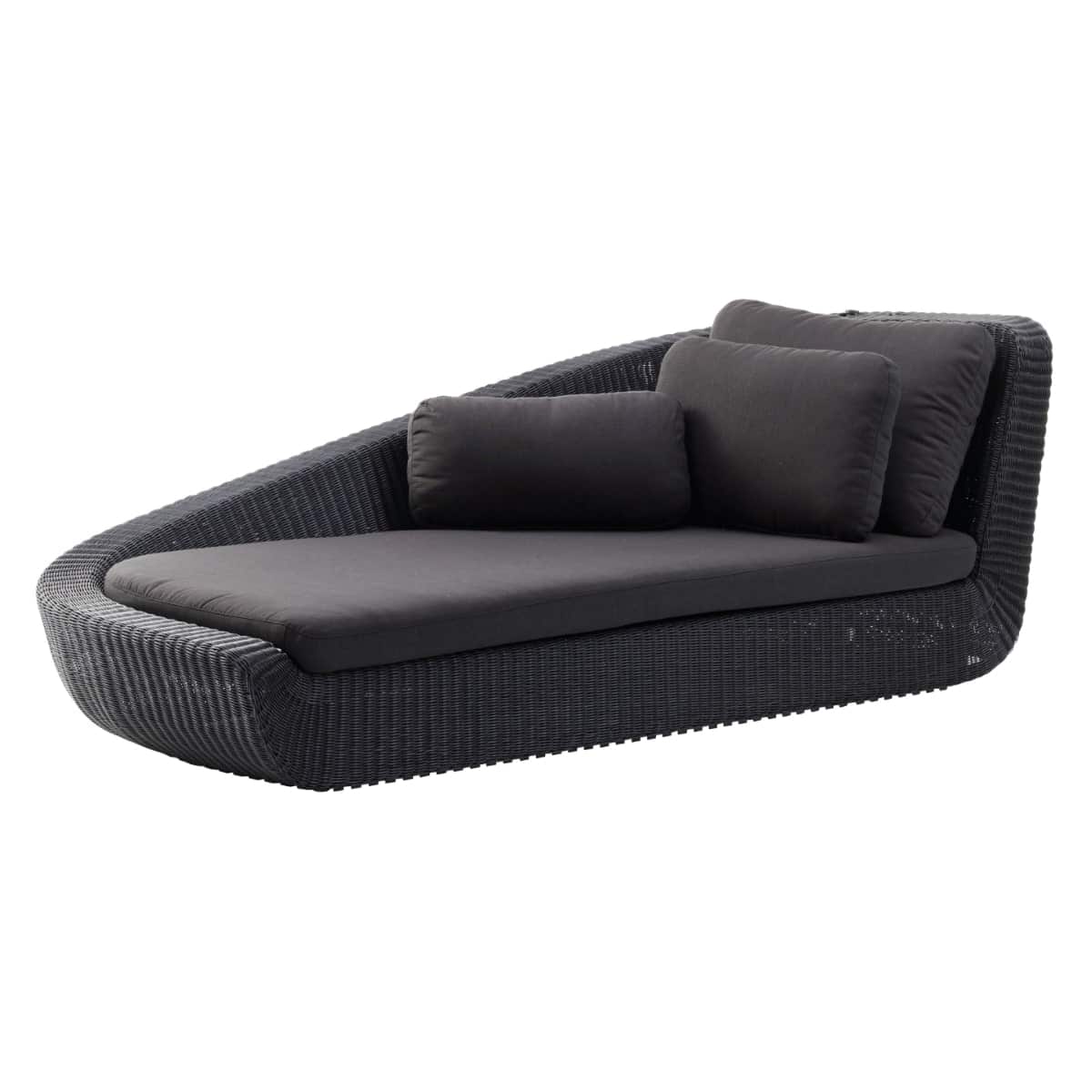
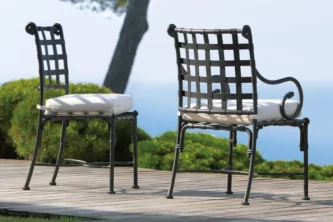
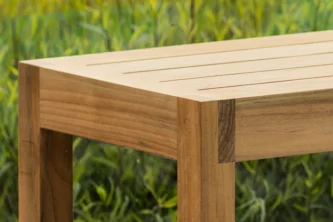

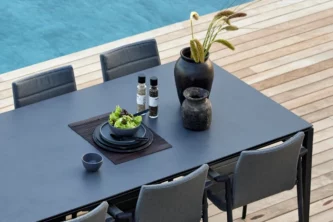
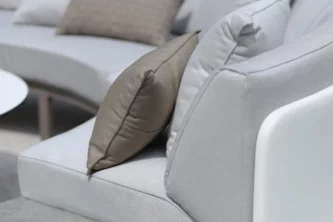





Leave a Reply